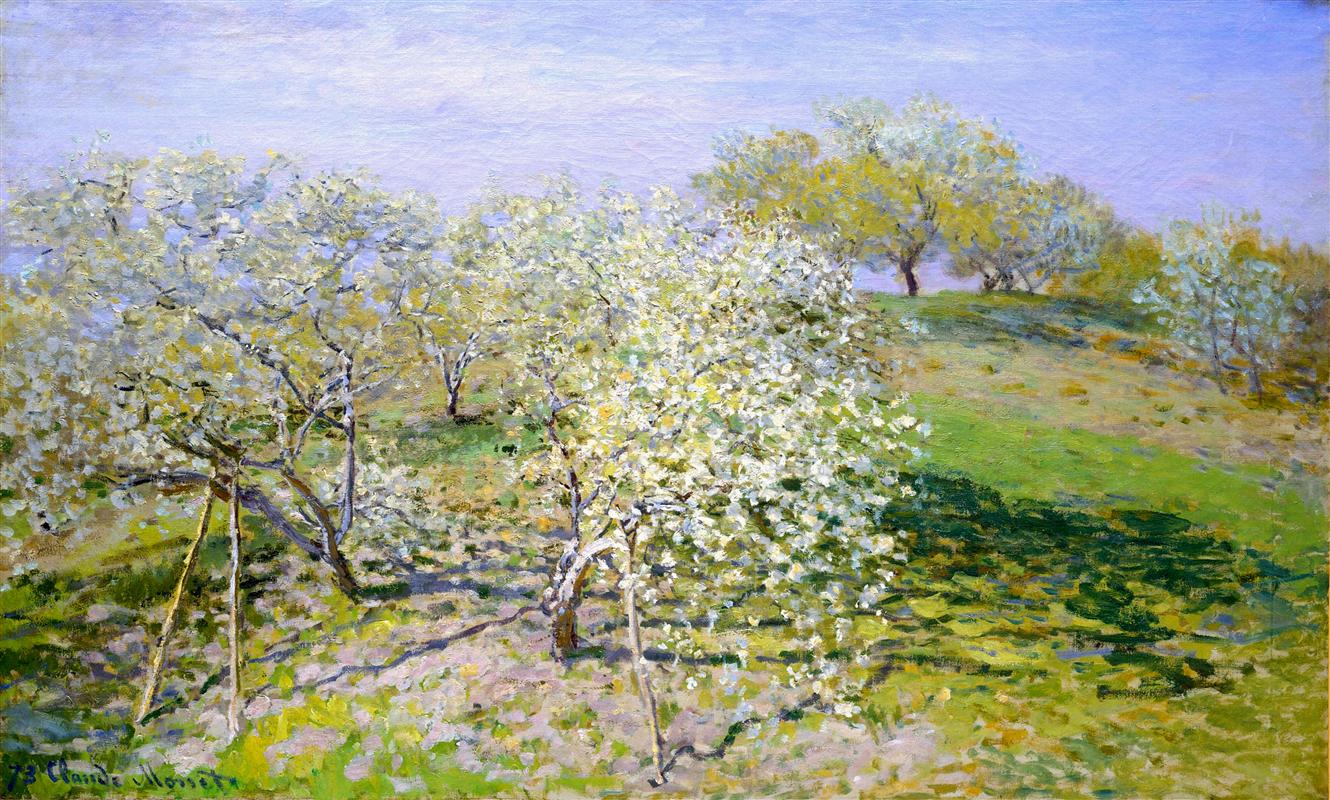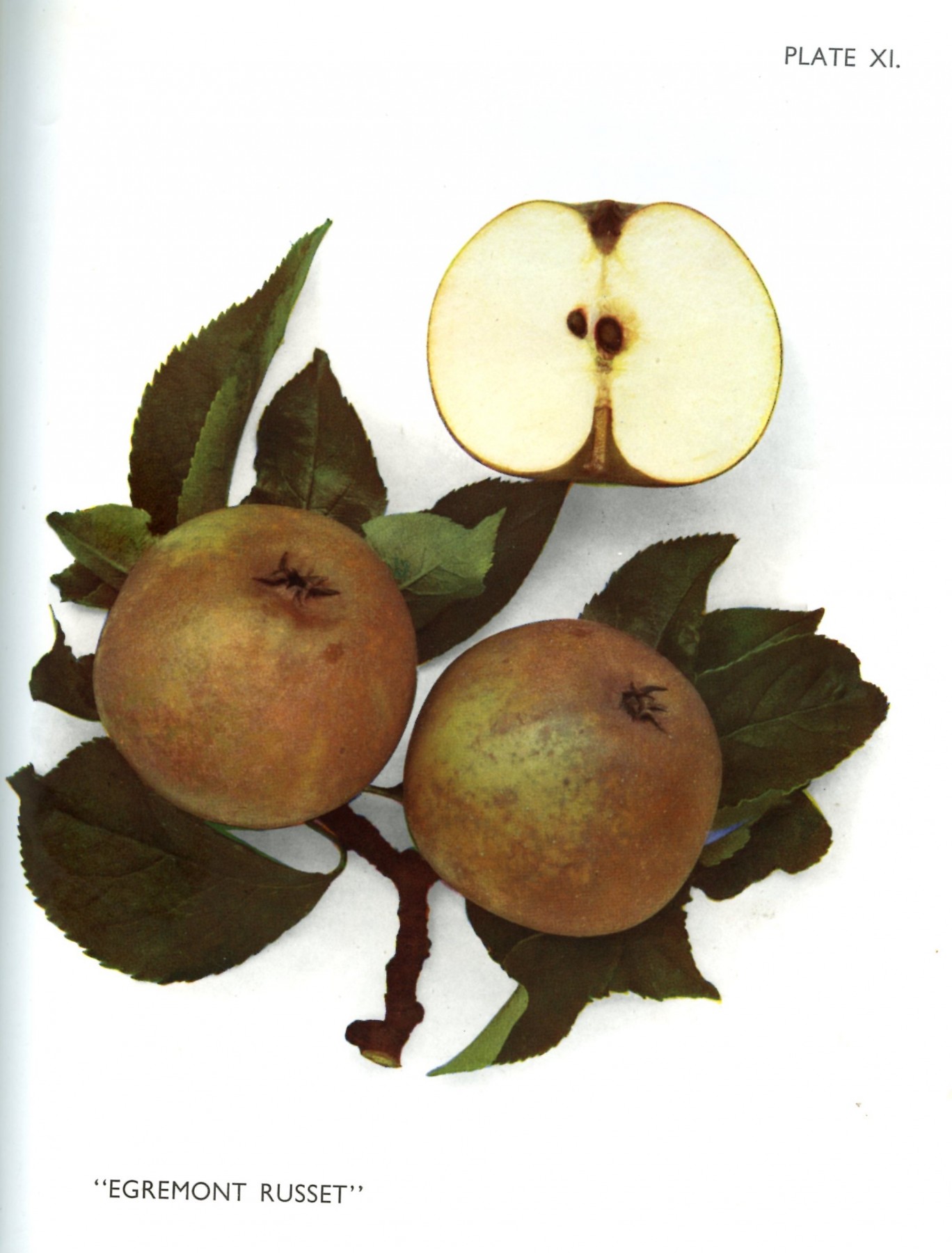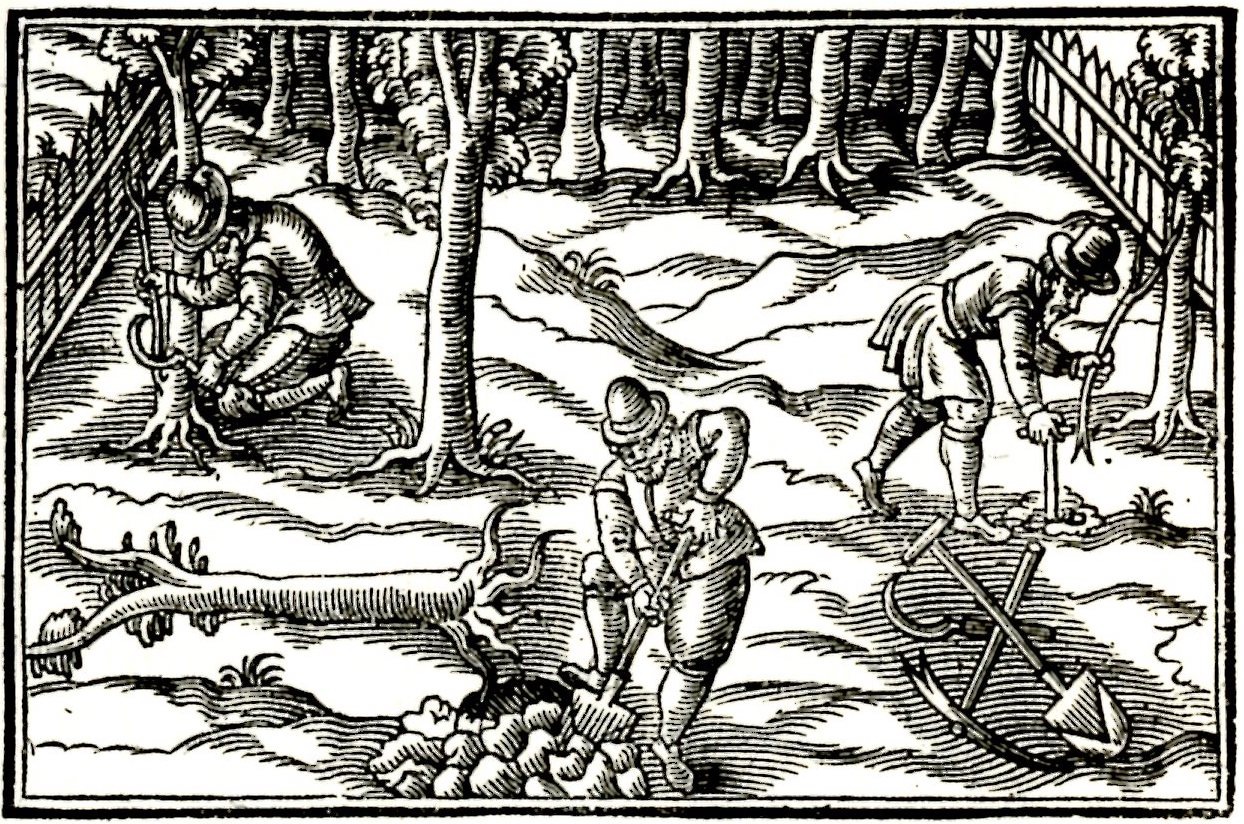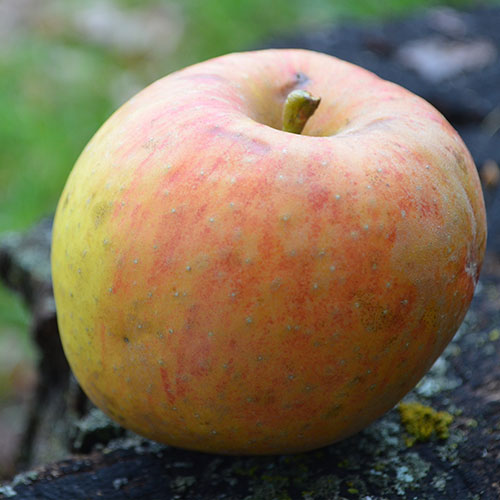Question: do you garden by memory? By that I mean is the gardenia on your windowsill a remembrance of a scent-filled conservatory visited on a rainy day? Or are the geraniums on the patio the same sort as your mother grew? Hands up: mine is the one waving frantically in the corner.

Once I had an apple orchard that I planted with a dozen historical varieties of this age-old fruit, including the ‘Costard’ apple, a variety dating back to the 13th century and the days of knights in armor. And that’s why I am here to tell you that Seed Savers Exchange, the premier vendor of heirloom seeds, is offering antique varieties of apples for sale in their recent catalogue. Three varieties in particular acted on my senses like Proust’s madeline dunked in lime flower tea.
One of the very best eating apples is ‘Egremont Russet’, a fall-ripening/late season sort with small round fruit that is crunchy and juicy, flavored of honey and almonds. It makes a small upright tree that crops well, a trait which, in the words of one apple authority writing in the 1930s, makes it “popular for growing in private gardens and as cordons.” Cordons being the system of pruning trees tight against the main stem to form rows, and which are often used in old-style gardens as living screens or boundaries.

Russet apples take their name from the golden brown tint that covers the fruit skin like a fine veil. ‘Egremont Russet’ apples have a yellow “pimpling” as well, which makes me think, looking at the photo of the Seed Savers variety ‘Fall Russet’ that it is actually an Egremont. The other russet variety they are vending is ‘Royal Russet’. Many old apple varieties traveled here from Europe with the earliest settlers, who were bringing a treasured taste of home to their new world. ‘Royal Russet’ is doubtless one of these as it made an early appearance in an English gardening manual in 1597, mentioned by William Lawson, the author of A New Orchard and Garden.

Finally, Seed Savers are offering the apple ‘Belle de Boskoop,’ which likely arrived here from the Lowlands of Holland, Germany and Belgium where it was widely grown. It’s a pretty red apple, but reportedly rather too acid to make a good dessert or eating apple, yet that is precisely what makes it excellent for cooking; at least where I live there is a distinct shortage of good pie apples, so I may well plant this variety.


As this is the season to order and plant fruit trees, be encouraged to know that you’d be promoting the health of the planet; a document in support of land conservation, prepared by the Trust for Public Land, reported that a single mature tree can absorb carbon dioxide at a rate of 48 pounds per year while releasing enough oxygen into the atmosphere to support two human beings. What if that tree also produced food? In Europe there is a movement to plant community orchards on waste ground or on land provided by public entities. In England, the National Trust has established a ‘mother orchard’ to propagate and disperse antique apple varieties. In the USA the movement is slowly catching on, but more as an offshoot of the CSA (community supported agriculture) movement where you subscribe to a share of the harvest or else pick-your-own in season. ‘Scrumping’ or scavenging is another way to obtain fresh apples by helping neighbors gather in fruit that might otherwise go to waste. This may be the tack I adopt until my own fruit trees come into bearing. There are a couple of anonymous apple trees on my street that, having picked up and munched on a few windfalls, I know to have tasty fruit. This year the squirrels may find they have competition.
© Ethne Clarke, 2018. Apple variety photos from Seed Savers Exchange catalogue.


